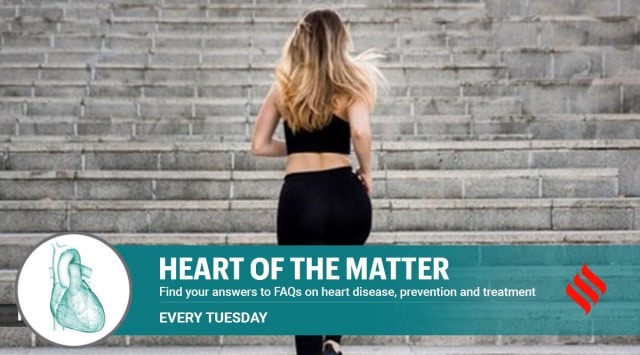Can walking 50 steps up the stairs daily reduce heart attack and clots? A study has some answers
If you are in search of an exercise routine that works for you, listen in to what top cardiologists are saying
 Climbing stairs gives you three times as much exercise as the same amount of time walking on the ground (Source: Freepik)
Climbing stairs gives you three times as much exercise as the same amount of time walking on the ground (Source: Freepik) Climbing five flights of stairs daily can reduce the risk of blood clots, plaques, and heart attacks by as much as 20 per cent compared to a sedentary lifestyle, according to a recent large-scale study. Not only was the protective effect of stair-climbing felt in those who didn’t have a known cardiovascular risk, it helped lower or mitigate risk in those who had pre-existing triggers. Each flight had at least ten steps. So they climbed 50 steps at a go.
Does this routine work for everybody? It applies to those who have no history of heart disease, are generally fit and do not have deranged markers like blood pressure or obesity. Not for those who have been sedentary all their life and suddenly decide to change their ways. “What applies before signing up for a gym applies here too. You have got to assess the status of your heart, particularly if you are 40ish, and test its endurance capability. So you need to do an echocardiogram and heart stress test. Once you are greenlighted, stair-climbing is a good routine to follow, particularly among younger people,” says Dr Nishith Chandra, Principal Director, Interventional Cardiology, Fortis Escorts Heart Institute, Delhi.
WHY STAIR-CLIMBING CAN BENEFIT THE HEART
Walking up steps is nothing but an enhanced form of aerobic exercise in which the body fights gravity to move upward and in the process works up every muscle group — the heart is a muscular organ — and expends more energy. And the effect is intensified because your body is also in motion. “Climbing five flights of stairs at one go is another form of high intensity interval training (HIIT) exercise. Now a layman doesn’t understand HIIT, so the researchers have chosen an equivalent,” explains Dr Chandra.
Also climbing stairs gives you three times as much exercise as the same amount of time walking on the ground and is linked to faster outcomes. Some studies have proved that HIIT workouts can produce equal or greater improvements in blood pressure, blood sugar levels and body weight, compared with moderate-intensity exercise.
DO ALTERNATIVES WORK?
Since the study was done over 12.5 years and followed 4,58,860 adult participants from the UK Biobank, what we overlook is that they may have started from a certain baseline data, which may not have factored co-morbidities and other factors. As Dr Pradeep Kumar D, Senior Consultant, Cardiology, Manipal Hospital, Yeshwanthpur, reasons, “Stair climbing is difficult among people who have knee and joint problems, particularly those above 50 or those with specific orthopaedic problems. Exercises are meant to be modified and customised to your needs. All you need to watch out for any exercise is that it helps you reach 70 to 80 per cent of your maximum predicted heart rate.”
Apart from stair-climbing, one can do brisk walking, jogging, play badminton and tennis. When it comes to Indians, any exercise is better than no exercise. Adherence to a regime and a consistent lifestyle go a long way in improving your heart health, feels Dr Kumar.
WHO SHOULD BE CAUTIOUS ABOUT HIIT ROUTINES?
Since stair-climbing can cause a spike in blood pressure and heart rate, it is not recommended for people with uncontrolled blood pressure or other known heart conditions. HIIT is safe if you’re healthy and have no history of heart problems. “That’s why a pre-routine checkup is a must. For even if you have smaller plaques, an intense regime may dislodge them and cause a tear in the vessels and blood may rush in to form a bigger clot over them, triggering a heart attack. So always go by what your doctor says,” says Dr Chandra. No matter what exercise pattern you follow, it is a good idea to listen to your body and build gradually.



- 01
- 02
- 03
- 04
- 05




























